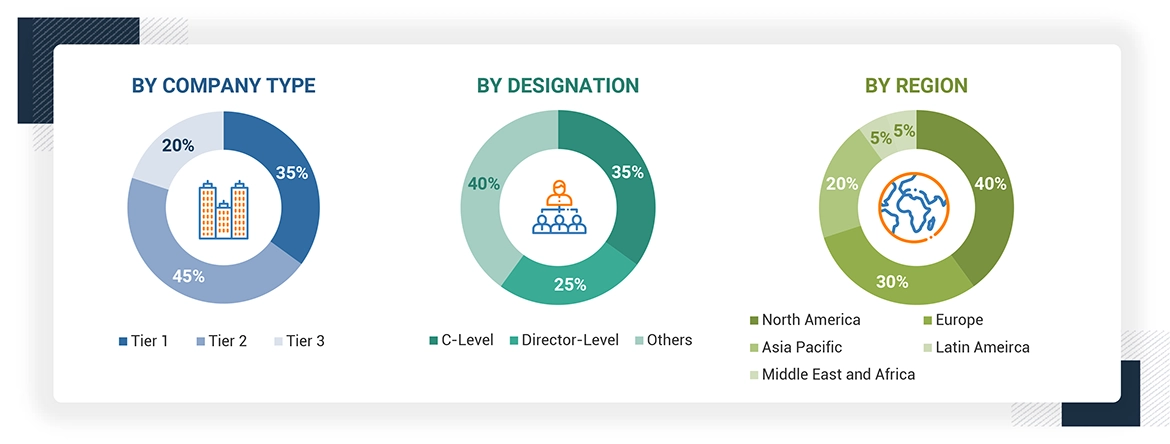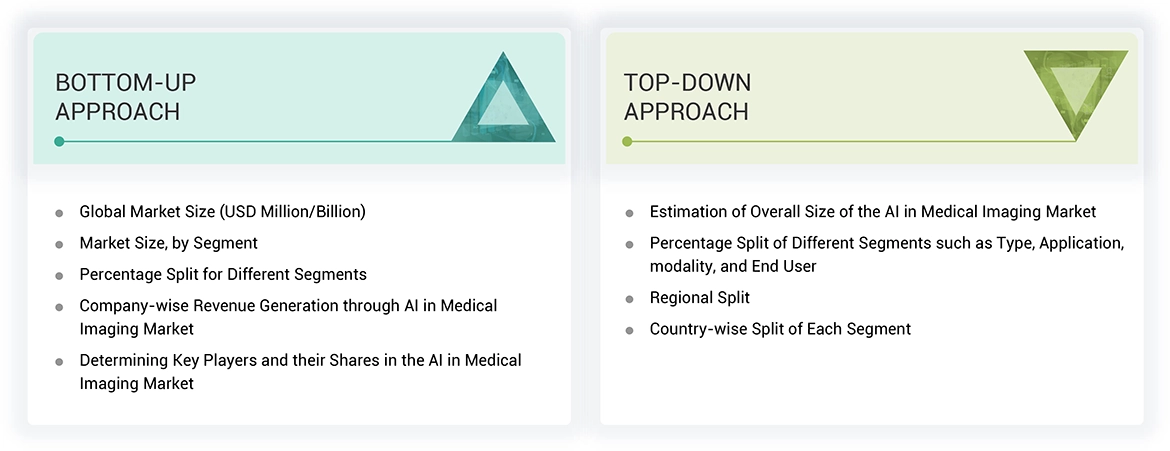The scope for a well-balanced approach for both primary and secondary research about the AI in medical imaging market involved the review of many relevant variables for the small, medium-sized, and large enterprises. Direct engagement with experts from all across the industry value chain would take place, validating assumptions and findings during primary research for market size. This estimate was produced using a mix of several methodologies including a top-down and bottom-up approach. It studied significant market segments, evolving trends, regulatory frameworks, and competitive landscapes. It also considered market leaders and their strategies. Data triangulation was used at the end to finalize market size estimates, and primary research was used to validate the hypotheses.
Secondary Research
Secondary research relied on information derived from reputable sources, such as government publications, directories, and databases such as Dun & Bradstreet, Bloomberg Businessweek, and Factiva. These sources provided critical data on the technical, market-oriented, and commercial aspects of the AI in medical imaging market. Secondary data was analyzed to estimate the size of the market, and its accuracy was cross-checked through primary research.
Primary Research
Based on insights drawn from secondary sources, primary research was conducted to better understand the global AI in medical imaging market. Interviews were conducted with market participants from demand-side stakeholders such as hospitals, clinics, diagnostic laboratories, and imaging centers, as well as from supply-side participants including executives, product managers, marketing and sales managers from manufacturers, distributors, and channel partners. These interactions cut across key regions, including North America, Europe, Asia Pacific, and the Rest of the World. About 70% of the interviews involved supply-side experts, while 30% included demand-side participants. Data was collected through a combination of surveys, questionnaires, email correspondence, and telephonic and in-person interviews.

Note 1: C-level primaries include CEOs, CFOs, and COOs.
Note 2: Others include sales managers, marketing managers, business development managers, product managers, distributors, and suppliers.
Note 3: Companies are classified into tiers based on their total revenues. As of 2022, Tier 1 = >USD 2 billion, Tier 2 = USD 50 million to USD 2 billion, and Tier 3 = < USD 50 million.
To know about the assumptions considered for the study, download the pdf brochure
Market Size Estimation
The market size of the global AI in medical imaging market was estimated based on a review of prominent companies and their revenue shares. Key players, who hold significant shares of the market, were identified through secondary research, and their respective revenue figures were calculated. The process involved analyzing the annual and financial reports of major market participants as part of secondary research. Additionally, in-depth interviews with key industry leaders, such as directors, CEOs, and marketing executives, were conducted as part of primary research.
Both top-down and bottom-up approaches were used to estimate and validate the size of the AI in medical imaging market and its associated submarkets. The research methodology used includes the following details:
-
Revenues of individual companies were gathered from public sources and databases.
-
Shares of the AI in medical imaging market players were gathered from secondary sources to the extent available. In certain cases, these shares were determined through a detailed analysis of parameters such as product portfolios, market positioning, pricing strategies, and geographic reach.
-
Individual shares or revenue estimates were validated through expert interviews.
-
Percentage shares, splits, and breakdowns for the global AI in medical imaging market were determined by secondary sources and verified through primary research.
-
All macroeconomic indicators influencing market revenue growth were extensively analyzed and validated through primary research, ensuring that both qualitative and quantitative data were accurately verified.

Data Triangulation
The market size estimation of the overall market for AI in the medical imaging market followed a comprehensive market size estimation process. This process segmented the market into various segments and subsegments for better analysis. Data triangulation and market breakdown methodologies were used wherever applicable to ensure accuracy. This process included the assessment of various factors and trends from both demand and supply sides, which could help provide reliable and in-depth insights into the market. The AI in medical imaging market encompasses the use of artificial intelligence technologies to enhance, analyze, and interpret medical images in areas like radiology, oncology, cardiology, and other medical specialties, thereby enhancing diagnostic accuracy and patient care.
Market Definition
Artificial intelligence (AI) refers to the theory and development of computer systems capable of performing tasks that usually require human intelligence. AI involves the study & synthesis of intelligent agents—in this case, a computer system. The system perceives its environment and takes appropriate action to maximize success. AI is being developed to create expert systems and improve human intelligence in machines.
AI is used in the medical imaging market to analyze complex data from various imaging modalities and help end users interpret critical data points to diagnose conditions.
Stakeholders
-
Hospitals
-
Diagnostic care centers
-
Diagnostic laboratories
-
Radiologists and radiology clinics
-
Diagnostic imaging AI device manufacturers and suppliers
-
Medical research laboratories
-
Academic medical centers and universities
Report Objectives
-
To define, describe, and forecast artificial intelligence in the medical imaging market based on component, application, end-user, and region
-
To provide detailed information regarding the major factors influencing the market growth (such as drivers, restraints, opportunities, and challenges)
-
To strategically analyze micromarkets1 concerning individual growth trends, prospects, and contributions to the overall market
-
To analyze the opportunities in the market for stakeholders and provide details of the competitive landscape for market leaders
-
To forecast the size of the market segments concerning four main regions—North America, Europe, the Asia Pacific, and the Rest of the World (RoW)2
-
To profile the key players and comprehensively analyze their market shares and core competencies
-
To track and analyze competitive developments such as acquisitions, product launches/enhancements, expansions, agreements, collaborations, partnerships, and approvals in AI medical imaging market



Growth opportunities and latent adjacency in Artificial Intelligence (AI) in Medical Imaging Market